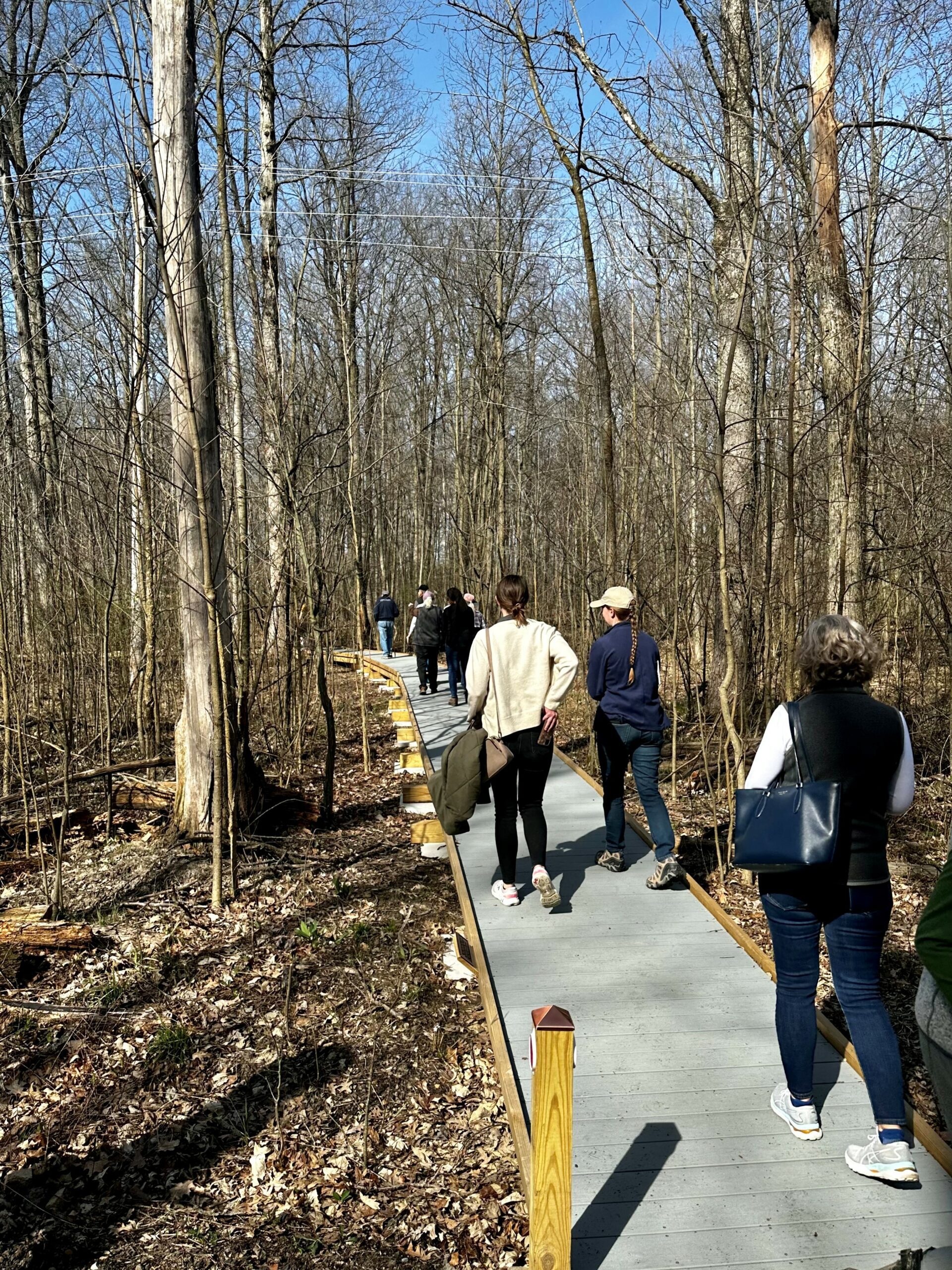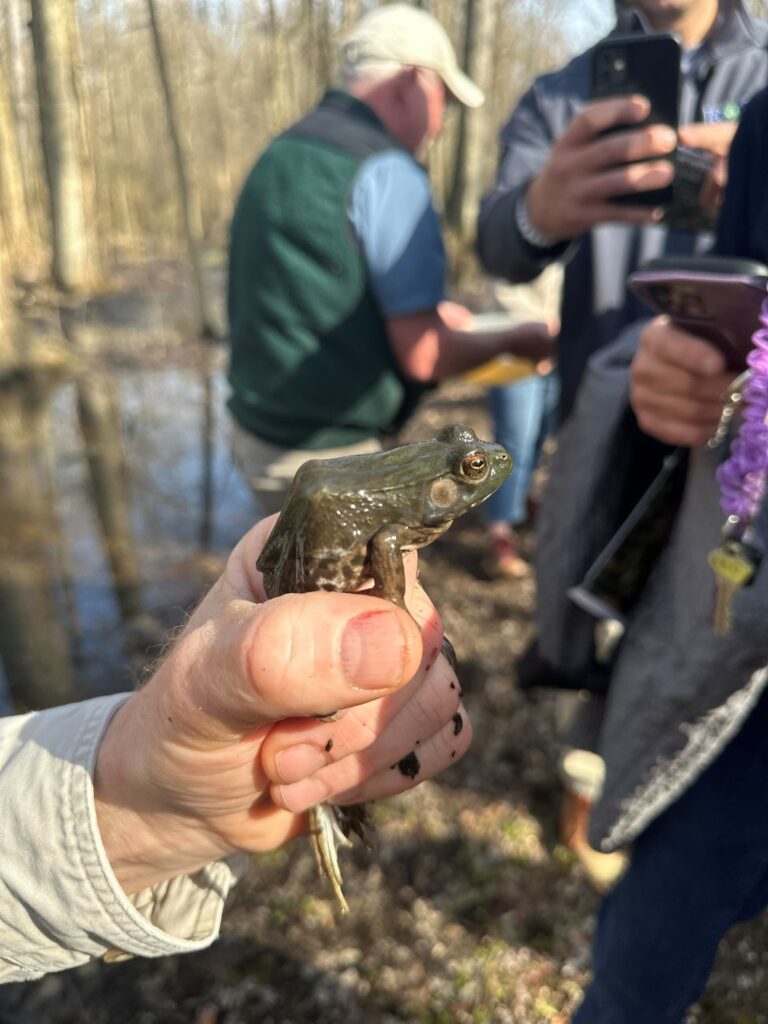
Western Reserve Land Conservancy Opens New Boardwalk and Overlook at Oberlin Preserve
Western Reserve Land Conservancy welcomed visitors and representatives from the City of Oberlin and Oberlin City Council to the grand opening of a new boardwalk and overlook at Oberlin Preserve, one of the organization’s Signature Parks and Preserves. The overlook is built along a hiking trail and sits adjacent to vernal pools and wetlands vibrant with wildlife. With a budget of $20,000 – funded by grants from Lorain County Public Health and the Ross Foundation – the boardwalk and overlook are just a few of many park improvements the group has made since opening the property to the public in 2021.
In 2015, Western Reserve Land Conservancy acquired the 63-acre property located on the southern edge of the City of Oberlin in Lorain County, part of what is considered the Oberlin Great South Woods. The site is on the south side of Hamilton Road, near Lorain County Metro Parks’ Splash Zone. Six years later, the Land Conservancy created its Signature Parks and Preserves program, opening and managing six properties owned by the group throughout Northeast Ohio for public access and enjoyment.

“We knew that people were getting outside, taking hikes and enjoying nature during Covid,” said Andy McDowell, vice president of western field operations at the Land Conservancy. “So we accelerated our efforts to make these Signature Parks and Preserves open, safe and accessible for all. Oberlin Preserve is the culmination of years of efforts by staff and volunteers to create a beautiful nature preserve on what was once a soybean farm.”
With few prairie areas in the region, the preserved property provides a unique glimpse at native grasses, shrubs and pollinators. Since its initial restoration planting in 2017, nearly 600 native wildflower plants, more than 200 native trees and 30 acres of prairie and wildflower seed were planted by corporate and community volunteers, as well as students from Oberlin College. Prairie species spotted last season include Big bluestem, Nodding wild rye, Blazing star, Rose milkweed, Rattlesnake master, Prairie dock, Virginia mountain mint and Cup plant.
The Oberlin Preserve also includes additional habitat types, such as fields, woodlands, wet sedge meadow and forested vernal pools. These habitats provide shelter, food and nesting areas for birds, amphibians, small and large mammals and other wildlife. The new boardwalk and overlook were recently built to enable visitors to better access a rich vernal pool full of wildlife. The site has been host to scientific research and biological surveys as far back as 1888, according to records at the Cleveland Museum of Natural History.
Oberlin Preserve offers so much to the people of Oberlin and northern Ohio. Its rich history, beautiful prairie, and diverse flora and fauna make this an ideal location in Lorain County. We are proud to have played an important role in opening this property for the public to enjoy.
Andy McDowell, Western Reserve Land Conservancy
The Oberlin Preserve was once owned by John and Delilah Copeland, who were free people of color who left North Carolina and moved to Oberlin in the 1840s to seek safety and better opportunity for themselves and their children. John and Delilah’s son, John Anthony Copeland, took part in two nationally significant anti-slavery events in the years leading up to the Civil War, including the Oberlin-Wellington Rescue of 1858 and the raid at Harpers Ferry in 1859, for which was executed.
Copeland became involved in abolitionist and antislavery activities, and participated in the successful Oberlin-Wellington Rescue. He was hanged on December 16, 1859. Copeland’s final words became a rallying cry for enslaved African-Americans throughout the south: “If I am dying for freedom, I could not die for a better cause. I had rather die than be a slave.”
The Land Conservancy has planted and maintained an “Underground Railroad Freedom Garden” on the north end of the property that features native trees, shrubs and plants that may have played a role in the lives of enslaved people who traveled north seeking freedom.
“Oberlin Preserve offers so much to the people of Oberlin and northern Ohio,” said McDowell. “Its rich history, beautiful prairie, and diverse flora and fauna make this an ideal location in Lorain County. We are proud to have played an important role in opening this property for the public to enjoy.”
